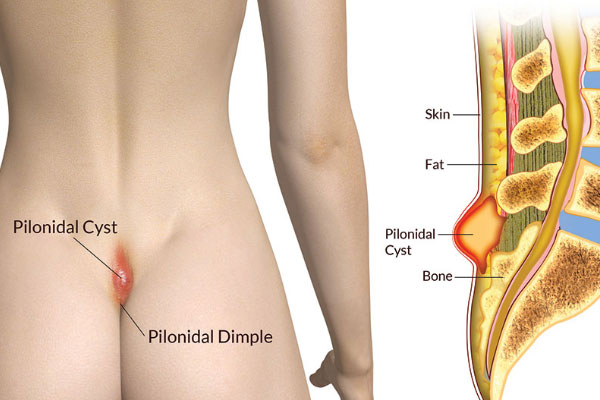What are Pilonidal Cyst?
Pilonidal cyst (pilo-nidal = “nest of hair”) is a common condition in which an abnormal small hole or tunnel in the skin is present containing hair and skin debris. It is almost always present in the midline at the top of the cleft between the buttocks.
